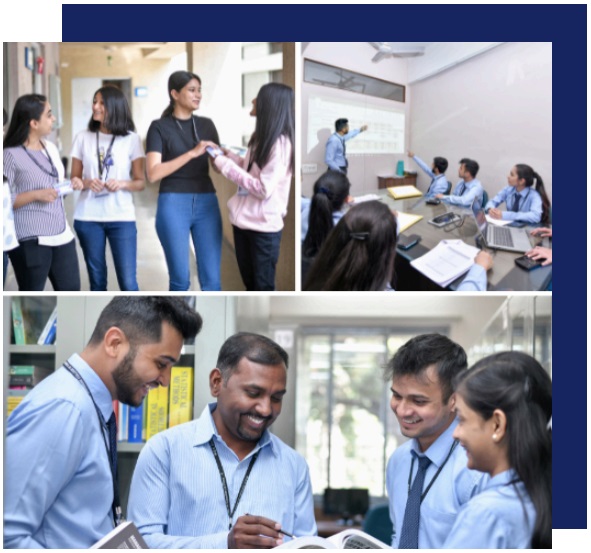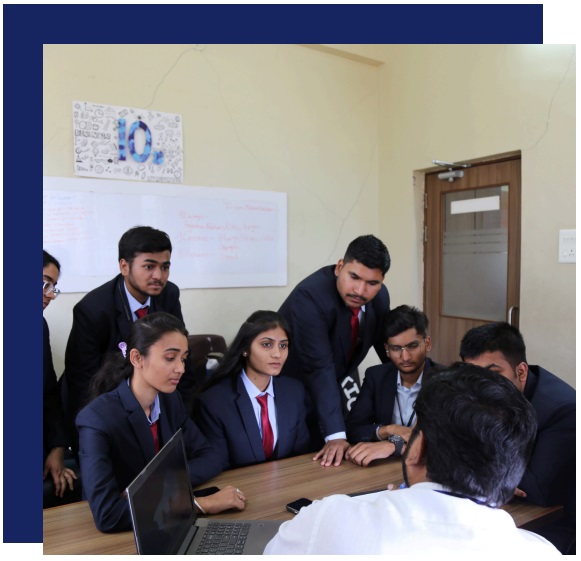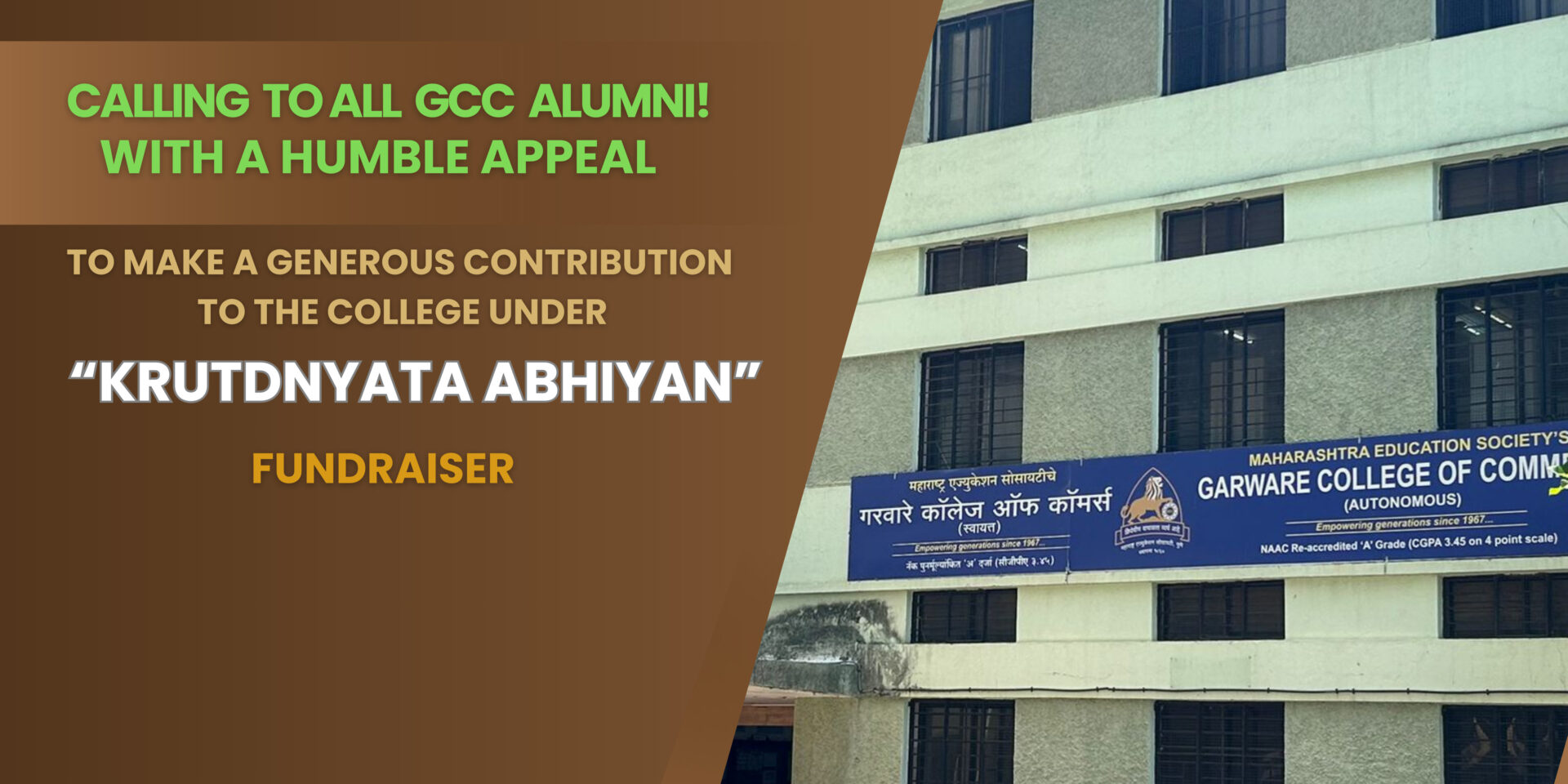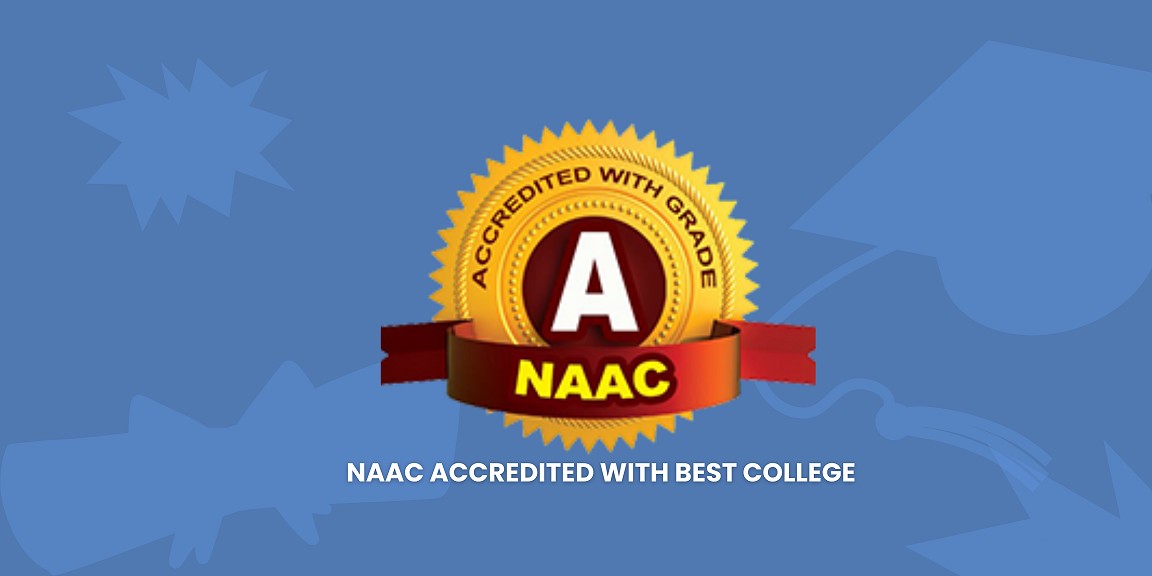Where Business Meets
Technology
WHAT IS BBA-CA?
Bachelor of Business Administration Computer Applications (BBACA) is a 3-year full-time degree programme that integrates core Business Administration subjects with specialised coursework in Computer Applications and Information Technology.
This Computer Degree Programme under Commerce and Management faculty, earlier called as Bachelor of Computer Application (BCA), provides an interdisciplinary curriculum that includes Introduction to Computer, Programming Languages, Web Technology, Database Management, Computer Networking, Cyber Security, Operating System, Software Testing, Cloud Computing, Front-end Development, Back-end Development and many more.
BBA CA helps students gain an understanding of business management principles and practical skills, providing them practical and managerial knowledge and equipping them to become an IT Professional.


WHY TO CHOOSE BBA-CA?
- Bridges Industry & Academia Gap
- Provides complete web development knowledge
- Application development with advance courses such as Big Data, Computer Networking, Operating System etc
- Includes advance languages and frameworks like AngularJS, Node JS, Jquery
- Hands-on coding experience with multiple live projects
- Builds business acumen & Digital marketing skills
NEP ALIGNED CURRICULUM
1 year : Certificate
2 years : Diploma
3 years : Degree
THINGS YOU SHOULD KNOW
PROGRAMME DURATION
BBA CA is a programme
with a duration of 3-year
full-time.INTAKE CAPACITY
FY:- 80 students
SY:- 80 students
TY:- 80 studentsTIMING
*ELIGIBILITY
12th EXAMINATION (10+2)
Eligibility of a candidate for admission should have passed 12th Std. examination (10+2) from any stream with English as Passing Subject and should have secured 40% marks in 12th Std from H.S.C. board or its equivalent.
OR TWO YEARS DIPLOMA
Two years Diploma in Pharmacy after H.S.C, Board of Technical Education conducted by Government of Maharashtra or its equivalent.
OR THREE YEARS DIPLOMA
Three year Diploma course (after S.S.C., i.e. 10th Standard) of Board of Technical Education conducted by Government of Maharashtra or its equivalent.
OR COMMON ENTRANCE TEST (CET)
COMMON ENTRANCE TEST (CET)Students have to take the Common Entrance Test of MAH-B CET test to get admission in BBA-CA at GCC.
Students who have completed Minimum Competency Vocational Courses (MCVC) are also eligible.
*As per Savitribai Phule Pune University (SPPU) Guidelienes
LEARNING SYSTEM
- At Garware College Of Commerce, we focus more on Quality Education than Quantity Education and provide opportunities to succeed.
- We help students to understand different concepts in innovative ways.
- We have good digital infrastructure like Projectors at every classroom of GCC and several well-equipped Computer Laboratories to make learning interesting and interactive.
- We also have a departmental and digital library with 64,000+ books and 320+ e-books for all our students so that the learning process is relentless.
Frontend Development
Database Management
Backend Development
Computer Networking
Data Science

Cyber Security
UI/UX Development
Digital Marketing
Entrepreneurial Skills
Teamwork
CAREER OPPORTUNITIES
Frontend
Developer
Database
Administrator
UI/UX Designer
Cybersecurity
Specialist
Backend
Developer
Software
Engineer
Data
Analyst
Data
Scientist
Ethical Hacking
IT Engineering
Full Stack
Developer
Application
Developer
Network
Administrator
Software
Tester
- To understand, develop and enhance fundamental knowledge of Computer Applications and different programming languages.
- To make students well equipped with recent IT technologies of Computer Application such as Al, Mobile Computing, IoT, Cloud Computing etc.
- To give in-depth knowledge and get hands-on practical experience of different softwares.
- To understand the life cycle of software- development through projectbased learning.
- To introduce essential Managerial, Communication, Technological and Logical skills through interactive learning processes.
- To guide students to accommodate themselves in the recent technological changing environment.
- The Semester End Examination will be conducted for 60 marks
- Continuous Comprehensive Evaluation (CCE) will be conducted for 40 marks.
- Thus for each paper the examination will be for 100 marks for each Semester.
- Passing marks percentage for any given paper is 40% (Out of 100). The Semester End Examination for every paper is of 60 Marks. Therefore, a student needs to get 24 marks minimum out of 60. For Continuous Comprehensive Evaluation (CCE), which means various internal examinations prior to Semester End; total marks are 40. Hence for CCE, a student needs to get 16 marks in a Paper. But there is no separate passing for CCE conducted. It means, the shortage of marks in CCE (less than 16 out of 40) is allowed. But in that particular paper, a student must compensate the shortage of marks in CCE, by getting more marks in Semester End Examination. Students must get 40 out of 100 in a given Paper. It is also to be noted that passing in the Semester End examination is compulsory.
- It also means, there is no separate passing in Internal Examination but there is separate passing for Semester End Examination.
- Backlog Internal Examination will be conducted for the students whose Aggregate percentage is less than 40% in particular paper but has got passed in Semester end examination.
- Similarly, if a student has scored less than 40% marks in internal as well as Semester End Examination of a particular paper, a student will become eligible to re-appear for the Internal Backlog Examination and Semester End Examination.
Distribution of Credits
Distribution of total credits for Three Years BBA-CA Programme (2021 pattern) is as follows:-
| Sr.No. | Nature of Courses | Semesters (Credits) | Total (Credits) | |||||
| I | II | III | IV | V | VI | |||
| 1 | Core Course | 15 | 15 | 12 | 06 | 09 | 09 | 66 |
| 2 | Core Course Practical/Project | 04 | 04 | 04 | 09 | 08 | 10 | 39 |
| 3 | Generic Elective Course | -- | -- | 03 | 06 | 03 | 03 | 15 |
| 4 | Discipline Special Elective Course | -- | -- | -- | -- | -- | -- | -- |
| 5 | Skill Enhancement Course + Internship | 02 | 02 | -- | 02 | 02 | 02 | 10 |
| 6 | Ability Enhancement Compulsory Course | -- | -- | 02 | -- | -- | -- | 02 |
| Sub Total | 21 | 21 | 21 | 23 | 22 | 24 | 132 (Grand Total) | |
Abbreviations and Meaning of various terms used
- Course - A “Course” is a component of a Programme, so in the new system, papers will be referred to as courses. Each course is identified by a unique course code. While designing curriculum, courses can have defined weightages. These weightages are called Credits. Each course, in addition to having a syllabus, has learning objectives and outcomes. A course may be designed to comprise lectures/ tutorials/ field work project/vocational training /viva-voce etc. or a combination of some / any of these.
- Credit - The definition of “Credits” can be based on various parameters. These may be the learning hours put in, learning outcomes and contact hours, the quantum of content/ syllabus prescribed for the course. The Credit System requires that a student progresses in the academic Programmes not in terms of time (years or semesters), but in terms of courses.
- CC - Core Courses - A course, which should compulsorily be studied by a candidate as a core requirement is termed as a Core Course.
- DSC- Discipline Specific Elective Courses - Elective courses offered by the main discipline/ subject of study is referred to as Discipline Specific Elective.
- SEC- Skills Enhancement Courses - These courses are designed to provide value-based knowledge and contains both theory and lab/hands-on/training/field work. The main purpose of these courses is to provide students life-skills in hands-on mode so as to increase their employability.
- AECC- Ability Enhancement Compulsory Courses – These courses are based upon the contents that lead to knowledge enhancement. These courses are mandatory for all disciplines.
Scheme Of Credit
Total credits for three years BBA-CA (2021 pattern) is as follows:-
| Sr. No | Semester No | No. of courses | Credit per theory course | Credit for project/practical courses | Add on course credit (*) | Lectures + Practical + add on courses= Total Credits |
|---|---|---|---|---|---|---|
| 1 | I | 6 | (5*3) | (1*4) | 2 | 15 +4+2 =21 |
| 2 | II | 6 | (5*3) | (1*4) | 2 | 15 +4+2 =21 |
| 3 | III | 6 | (5*3) | (1*4) | 2(EAC) | 15 +4+2 =21 |
| 4 | IV | 6 | (4*3) | (1*3)+(1*6) | 2 | 12 +9+2 =23 |
| 5 | V | 6 | (4*3) | (1*4)+(1*4) | 2 | 12 +8+2 =22 |
| 6 | VI | 6 | (4*3) | (1*4)+(1*6) | 2 | 12 +10+2 =24 |
| Total No. of credits : 132 |






































































